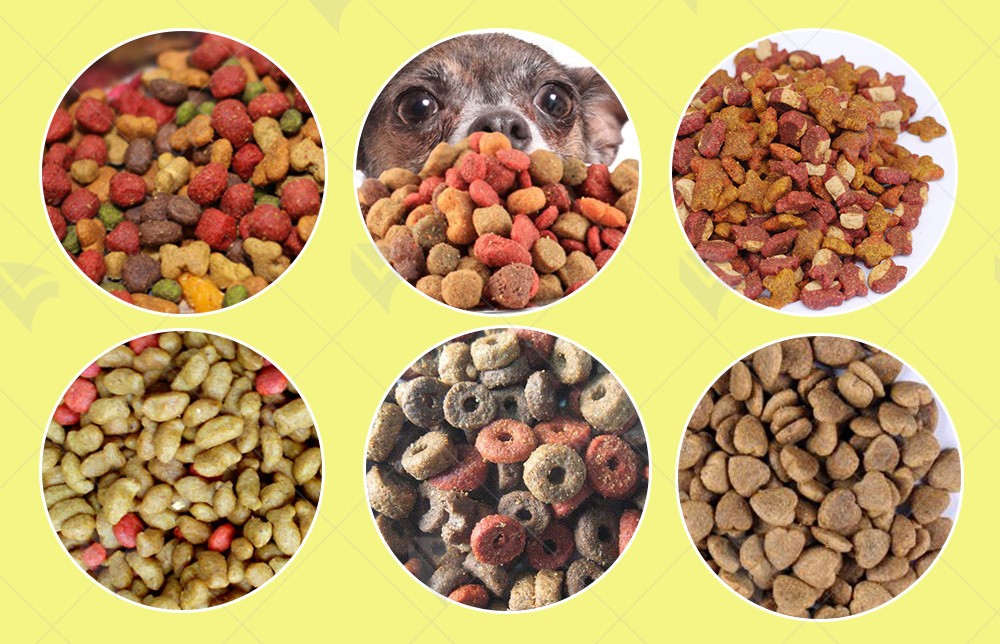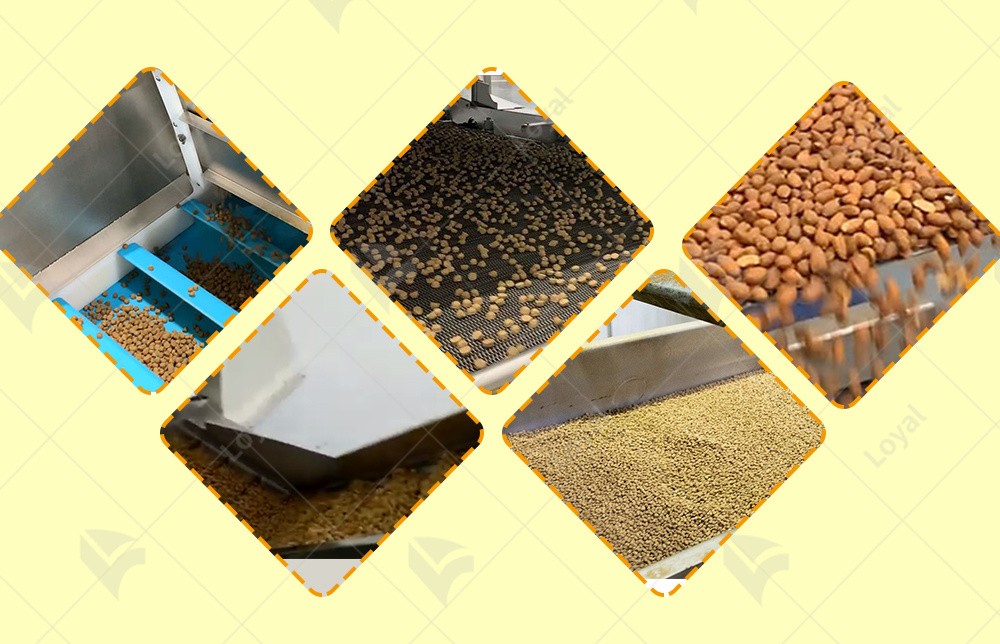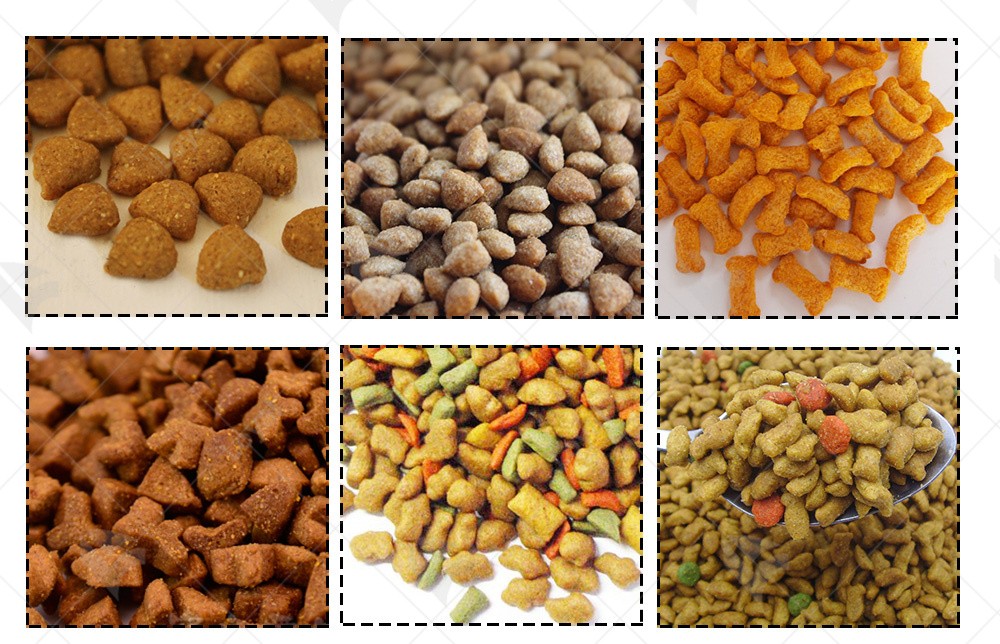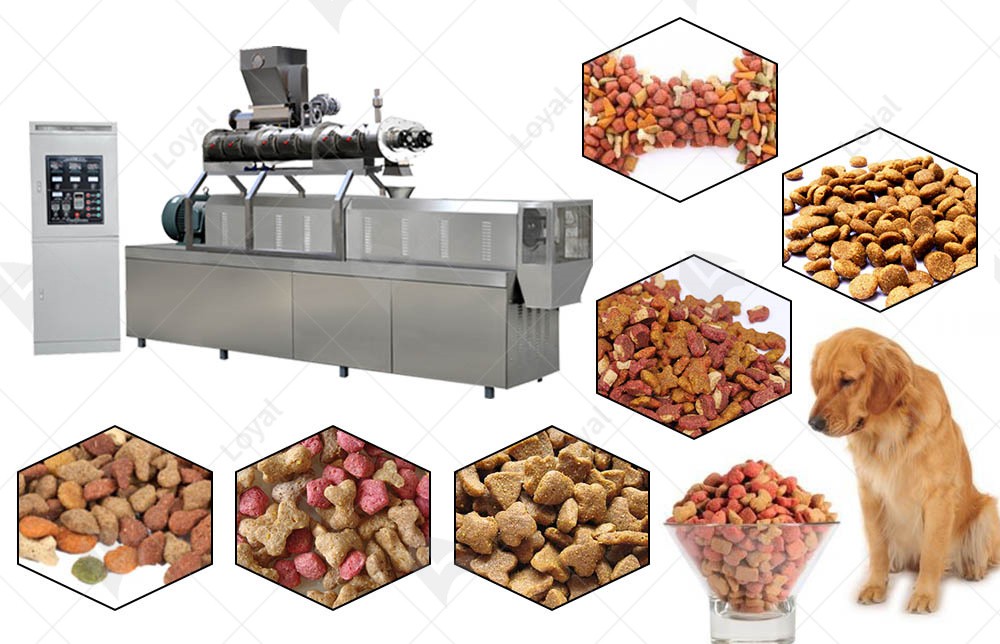Unlock The Secrets Of Efficient dog food manufacturing equipment Manufacturing
Overview of the Dog Food Manufacturing Industry
The dog food manufacturing industry has evolved significantly over the past few decades, driven by advancements in technology and changing consumer preferences. Today, it is a highly competitive and dynamic sector that is constantly evolving to meet the growing demand for high-quality, nutritious, and convenient dog food products.
Innovations in this field have not only improved production efficiency but have also enhanced the quality and safety of dog food products.
One of the key trends in the dog food manufacturing industry is the increasing demand for personalized and specialized diets for dogs. This has led to the development of advanced manufacturing equipment that can cater to a wide range of dietary needs, including grain-free, organic, and hypoallergenic options. Manufacturers are now able to produce tailored formulas that meet the specific requirements of different breeds, ages, and health conditions of dogs.
Moreover, the rise of e-commerce and direct-to-consumer sales channels has placed greater emphasis on packaging and labeling efficiency. Dog food manufacturing equipment that automates packaging and labeling processes has become increasingly important, as it helps manufacturers to meet the demands of a fast-paced and competitive market.
In terms of production efficiency, advancements in automation and robotics have revolutionized the dog food manufacturing process. Automated mixing and blending systems, extruders, and packaging machines have significantly reduced labor costs and increased throughput. These innovations have not only improved production speed but have also ensured a higher level of consistency and accuracy in the final product.
Furthermore, the focus on sustainability and environmental responsibility has led to the development of dog food manufacturing equipment that minimizes waste and energy consumption. Manufacturers are increasingly adopting technologies that recycle waste materials, optimize energy use, and reduce carbon emissions.
In conclusion, the dog food manufacturing industry is continuously evolving, driven by advancements in technology and changing consumer demands. Innovations in dog food manufacturing equipment have been pivotal in enhancing production efficiency, improving product quality and safety, and meeting the diverse dietary needs of dogs.

Introduction to Innovative Dog Food Manufacturing Equipment
The dog food manufacturing industry has witnessed a surge in innovation, particularly in the realm of equipment and machinery.This evolution is not only transforming the way dog food is produced but is also significantly enhancing production efficiency and product quality.
At the forefront of this innovation are the various types of dog food manufacturing equipment that have been designed to meet the evolving needs of the industry. These equipment range from mixing and forming machines to packaging and labeling systems, each playing a crucial role in the production process.
In this article, we will explore some of the most innovative types of dog food manufacturing equipment currently available in the market. We will delve into their unique features, benefits, and how they are enhancing production efficiency. By understanding these advancements, manufacturers can make informed decisions about the types of equipment that best suit their needs and help them stay competitive in the rapidly evolving pet food industry.
|
Mixing and Blending Equipment |
One of the fundamental steps in dog food manufacturing is the mixing and blending of ingredients. Innovative mixing and blending equipment have been developed to ensure consistent and homogeneous mixtures, which are crucial for producing high-quality dog food. These machines utilize advanced mixing technologies, such as paddle mixers, ribbon blenders, and planetary mixers, to effectively combine ingredients. The paddle mixer, for instance, uses rotating paddles to mix ingredients thoroughly, ensuring that all components are evenly distributed. Similarly, ribbon blenders use a ribbon-shaped agitator to blend materials gently, minimizing the risk of ingredient degradation. Moreover, some mixing and blending equipment are equipped with automated control systems that monitor and adjust mixing parameters in real-time. This ensures optimal mixing conditions, enhancing production efficiency and product quality. |
|
Forming and Extruding Equipment |
After mixing and blending, the next step in dog food manufacturing is forming and extruding the mixture into the desired shape and size. Innovative forming and extruding equipment have been designed to produce a wide range of dog food shapes and sizes, catering to the diverse preferences of consumers. Extruders are particularly popular in dog food manufacturing as they can produce a variety of textures and shapes, such as kibbles, nuggets, and bites. These machines use a combination of heat, pressure, and shear force to shape the mixture into the desired form. By adjusting the extruder's settings, manufacturers can customize the size, shape, and texture of the dog food to meet specific market demands. In addition to their versatility, modern extruders are equipped with advanced control systems that monitor and regulate the extrusion process in real-time. This ensures consistent product quality and enhances production efficiency by minimizing waste and downtime. |
|
Packaging and Labeling Equipment |
The final step in dog food manufacturing is packaging and labeling. Innovative packaging and labeling equipment have been developed to ensure that dog food products are securely packaged and accurately labeled, meeting all regulatory requirements and consumer expectations. Automated packaging machines, such as vertical form-fill-seal (VFFS) machines and horizontal form-fill-seal (HFFS) machines, have revolutionized the packaging process. These machines automatically form, fill, and seal packages, reducing labor costs and enhancing production efficiency. Moreover, they can be equipped with various filling options, such as auger fillers and volumetric pumps, to accommodate different types of dog food products. Labeling equipment, on the other hand, has become increasingly sophisticated, utilizing technologies such as print-and-apply systems and smart labeling solutions. These systems automatically apply labels to packages, ensuring that all necessary information, such as product name, ingredients, and expiration date, is accurately displayed. By integrating labeling equipment with packaging machines, manufacturers can streamline the packaging process, reducing errors and enhancing overall production efficiency. |

Benefits of Using Innovative Dog Food Manufacturing Equipment
In the rapidly evolving landscape of dog food manufacturing, the adoption of innovative equipment has become a pivotal factor in enhancing production efficiency.
1.Firstly, innovative dog food manufacturing equipment significantly boosts production capacity. Traditional machinery often struggles to meet the growing demands of the market, leading to bottlenecks and delays in production. However, modern equipment, such as high-speed extruders and automated packaging lines, can dramatically increase throughput without compromising on product quality. This not only enables manufacturers to meet market demands more effectively but also creates opportunities for expansion and diversification.
2.Secondly, the integration of innovative technology in dog food manufacturing equipment enhances product consistency and quality. Traditional methods can result in variations in texture, nutrition, and taste, which can affect both pet health and consumer satisfaction. Modern machinery, however, utilizes advanced sensors and controls to maintain precise production parameters. For example, automated mixing systems ensure that ingredients are accurately measured and combined, while extrusion technology allows for the precise shaping and sizing of kibbles. This consistency is crucial for building brand reputation and maintaining consumer loyalty.
3.Moreover, innovative dog food manufacturing equipment supports cost savings and operational efficiency. Older machinery often requires frequent maintenance and repairs, leading to increased downtime and operational costs. Newer equipment, designed with durability and reliability in mind, minimizes the need for maintenance and maximizes uptime. Additionally, many modern systems incorporate energy-efficient designs, reducing energy consumption and lowering operational costs. This allows manufacturers to remain competitive in the market while also contributing to environmental sustainability.
In conclusion, the benefits of using innovative dog food manufacturing equipment are numerous and significant. From boosting production capacity and enhancing product consistency to supporting cost savings and operational efficiency, these advancements are essential for manufacturers to stay ahead in the competitive dog food market.

Challenges and Considerations in Adopting Innovative Dog Food Manufacturing Equipment
1. Initial Investment Costs
One of the primary challenges faced by manufacturers is the initial investment required for new equipment. Innovative dog food manufacturing equipment often comes with a high price tag, which can be a significant barrier for smaller companies or those with tight budgets. It is crucial for manufacturers to carefully evaluate the potential return on investment (ROI) before making a purchase. This involves assessing the expected increase in production efficiency, cost savings, and potential market expansion opportunities that the new equipment can bring.
2. Technical Expertise and Training
Another important consideration is the technical expertise required to operate and maintain the new equipment. Innovative machinery often incorporates advanced technology and features that may be unfamiliar to existing staff. Manufacturers must invest in training programs to ensure that their workforce is equipped with the necessary skills and knowledge to operate the equipment effectively. This may involve partnering with equipment suppliers for specialized training sessions or hiring new staff with relevant technical backgrounds.
3. Integration with Existing Systems
When adopting new dog food manufacturing equipment, manufacturers must also consider how it will integrate with their existing production systems. This includes assessing the compatibility of the new equipment with existing machinery, software, and processes. Ensuring seamless integration is crucial for maintaining production efficiency and avoiding disruptions in the manufacturing process. Manufacturers may need to consult with equipment suppliers or engineering firms to develop customized integration solutions.
4. Regulatory Compliance
In the food manufacturing industry, regulatory compliance is paramount. Manufacturers must ensure that their new dog food manufacturing equipment meets all relevant safety, hygiene, and quality standards. This may involve obtaining certifications and undergoing inspections to verify the equipment's compliance with regulatory requirements. Failing to meet these standards can result in costly delays, fines, and even product recalls, which can damage a manufacturer's reputation and market position.
5. Sustainability and Environmental Impact
In today's world, sustainability is a critical consideration for all manufacturers. When adopting new dog food manufacturing equipment, manufacturers should evaluate its environmental impact and potential for reducing waste and energy consumption. This may involve looking for equipment that utilizes energy-efficient motors, reduces water usage, or incorporates recyclable materials in its design. By prioritizing sustainability, manufacturers can demonstrate their commitment to environmental responsibility and appeal to consumers who are increasingly conscious of their environmental footprint.
In conclusion, while the adoption of innovative dog food manufacturing equipment presents significant opportunities for enhancing production efficiency, it also comes with its own set of challenges and considerations. Manufacturers must carefully evaluate their needs, resources, and goals before making a decision. By taking a thoughtful and strategic approach, manufacturers can harness the power of innovative technology to drive business success and meet the evolving needs of the dog food industry.

Future Trends and Prospects for Dog Food Manufacturing Equipment Innovations
The industry is evolving rapidly, driven by consumer demands for higher quality, healthier, and more sustainable products. In this section, I will discuss some of the key future trends and prospects for dog food manufacturing equipment innovations that manufacturers should keep in mind.
|
Increased Automation and Robotics |
One of the most significant trends in dog food manufacturing equipment is the increasing use of automation and robotics. Automated machinery can significantly enhance production efficiency by reducing labor costs, minimizing human error, and increasing production speeds. In the future, we expect to see more sophisticated robotics systems being integrated into dog food manufacturing processes. These systems will be capable of performing complex tasks such as precise ingredient handling, mixing, and packaging, all while maintaining high levels of hygiene and safety. |
|
Advanced Process Control and Monitoring |
Another key trend is the development of advanced process control and monitoring systems. These systems utilize sensors, data analytics, and machine learning algorithms to monitor and optimize manufacturing processes in real-time. By collecting and analyzing data on key performance indicators such as temperature, humidity, and ingredient consistency, manufacturers can identify inefficiencies and make data-driven decisions to improve production efficiency and product quality. As technology advances, we anticipate that these systems will become even more sophisticated, enabling manufacturers to achieve greater precision and control over their manufacturing processes. |
|
Sustainable Manufacturing Practices |
Sustainability is a growing concern for consumers and manufacturers alike. In response to this trend, we expect to see more innovations in dog food manufacturing equipment that prioritize environmental responsibility. This may involve the development of machinery that utilizes renewable energy sources, reduces waste and energy consumption, and incorporates recyclable materials in its design. Manufacturers who prioritize sustainable manufacturing practices will be well-positioned to meet the evolving needs of consumers and comply with increasingly stringent regulatory requirements. |
|
Personalized and Customized Dog Food Products |
As consumer preferences continue to diversify, there is a growing demand for personalized and customized dog food products. To meet this demand, manufacturers will need to invest in equipment that enables them to produce smaller batches of customized products with high levels of precision and consistency. This may involve the development of new mixing and formulation technologies, as well as advanced packaging systems that can accommodate a variety of sizes, shapes, and labels. By embracing this trend, manufacturers can differentiate themselves in the competitive dog food market and appeal to consumers who are seeking unique and tailored products for their pets. |
|
Convergence of Food and Technology |
Finally, we expect to see a continued convergence of food and technology in the dog food manufacturing industry. This trend is being driven by the rapid development of digital technologies such as the Internet of Things (IoT), artificial intelligence (AI), and blockchain. By incorporating these technologies into their manufacturing processes, manufacturers can achieve greater transparency, traceability, and efficiency. For example, IoT sensors can be used to monitor machinery performance and predict maintenance needs, while AI algorithms can optimize production schedules and ingredient usage. Blockchain technology can be used to track the origin and authenticity of ingredients, enhancing consumer trust and brand reputation. |

Reference
The following are five authoritative foreign literature websites in the field of Industrial food machinery:
1. Food Engineering Magazine
Website: https://www.foodengineeringmag.com/
2.Food Processing Magazine
Website: https://www.foodprocessing.com/
3.Journal of Food Engineering
Website:https://www.journals.elsevier.com/journal-of-food-engineering
4. Food Manufacturing Magazine
Website:https://www.foodmanufacturing.com/
5. International Journal of Food Science & Technology
Website:https://onlinelibrary.wiley.com/